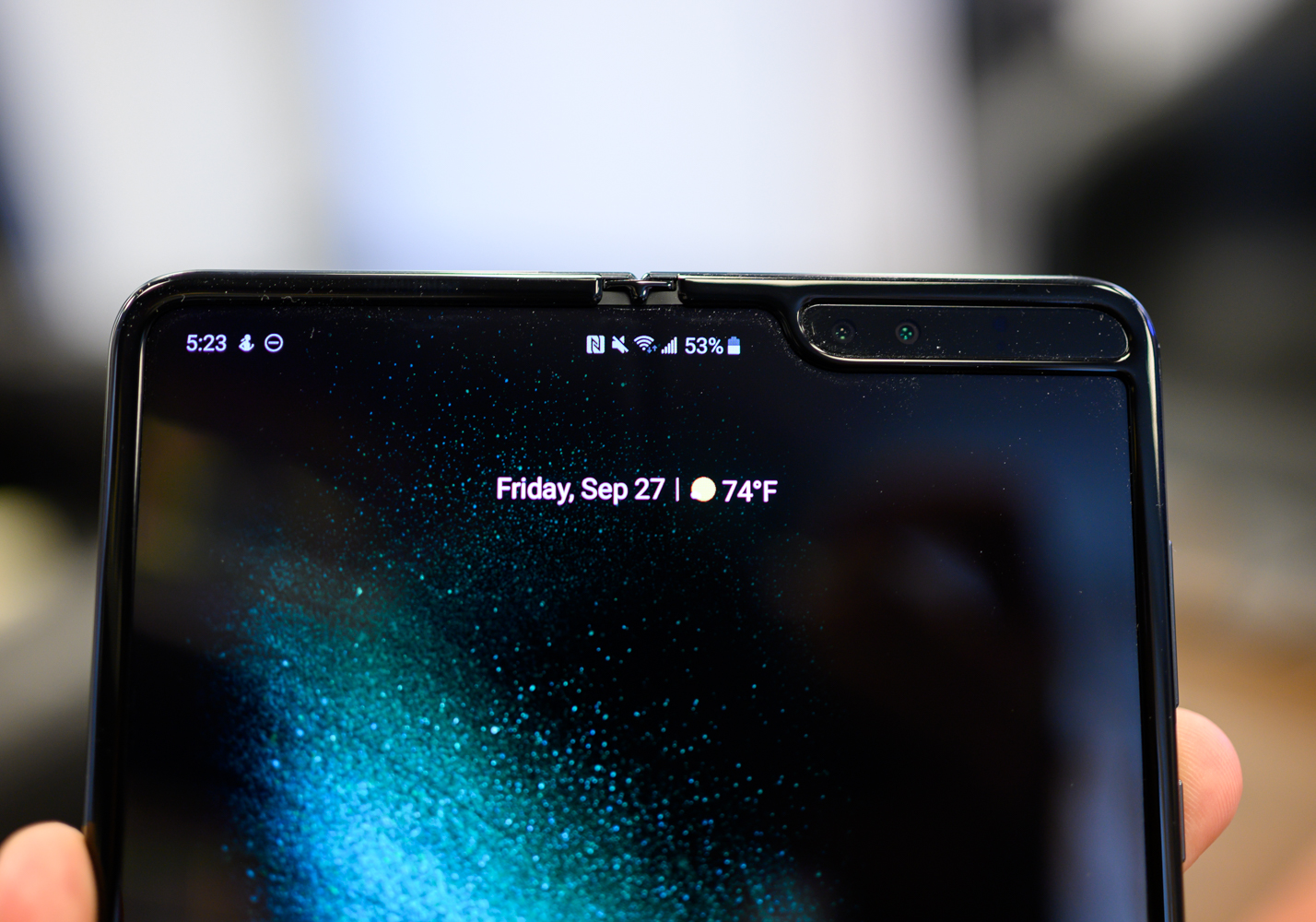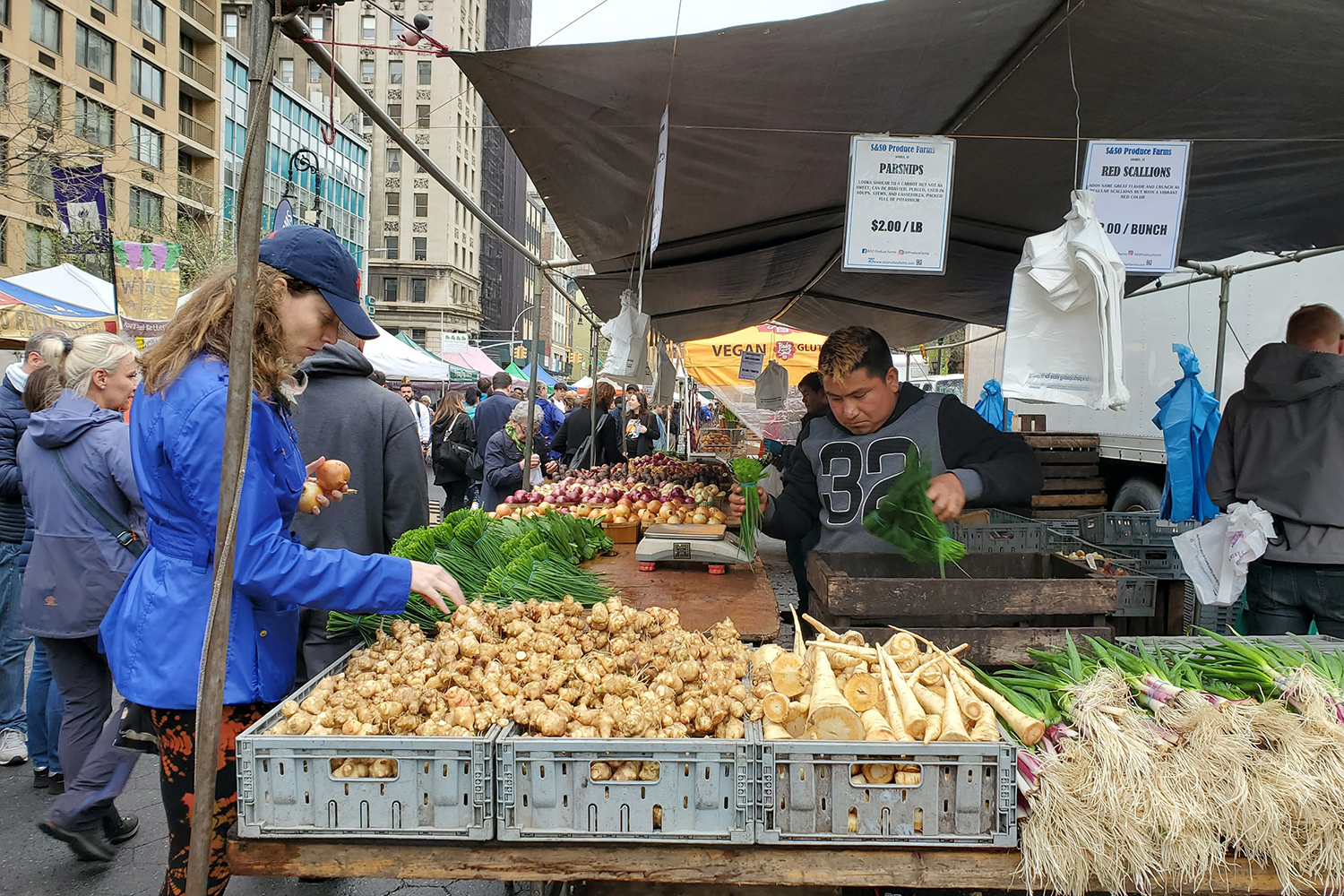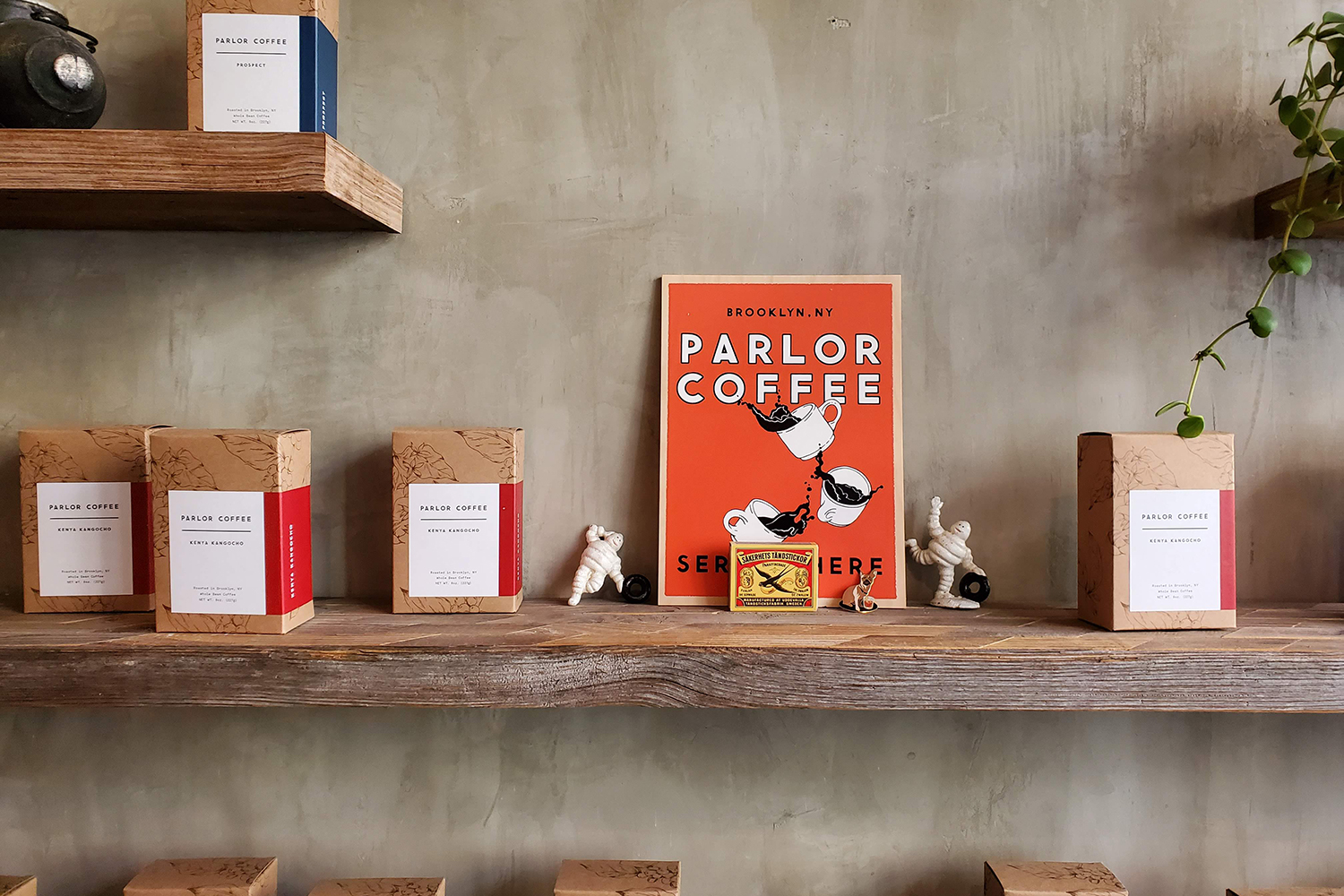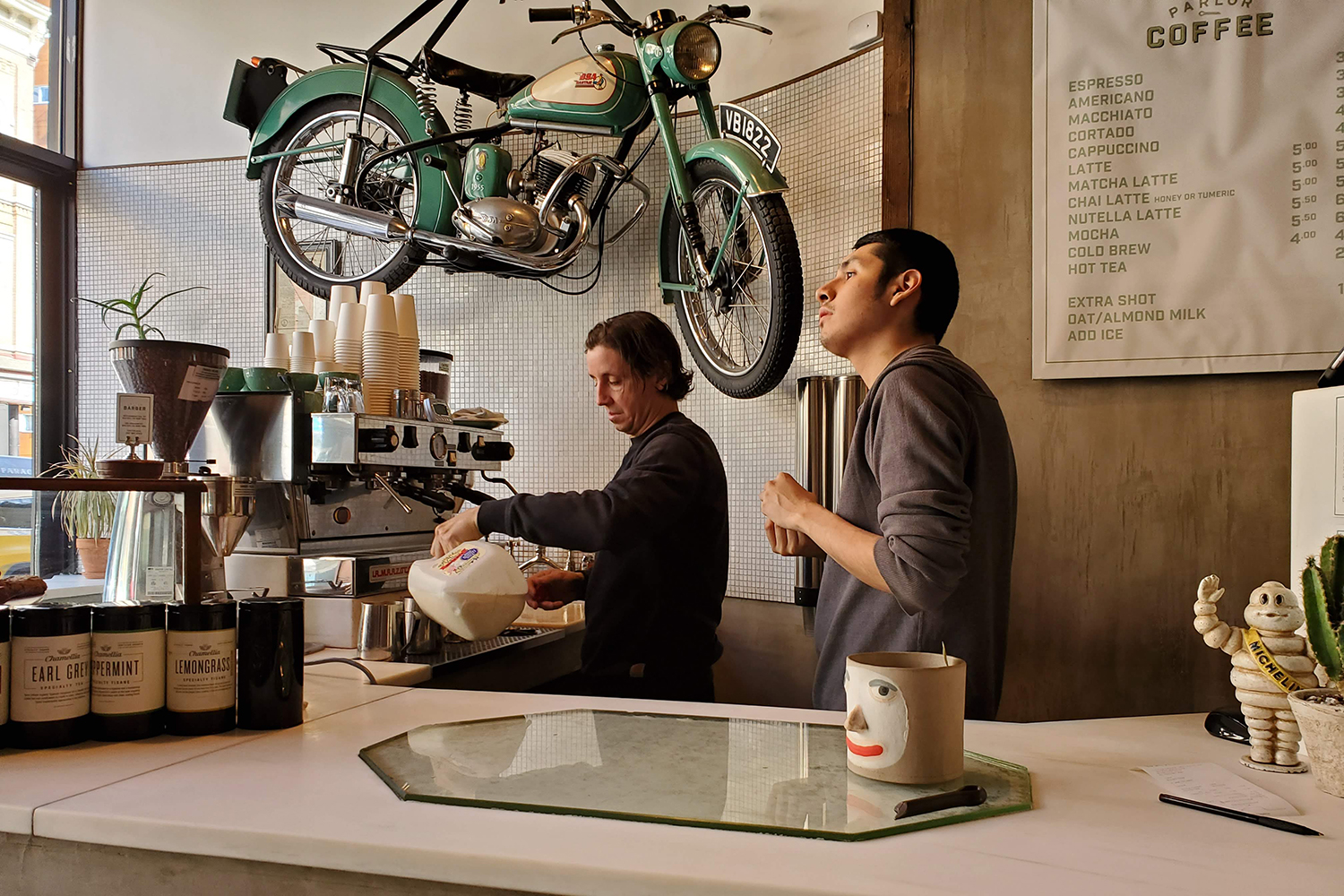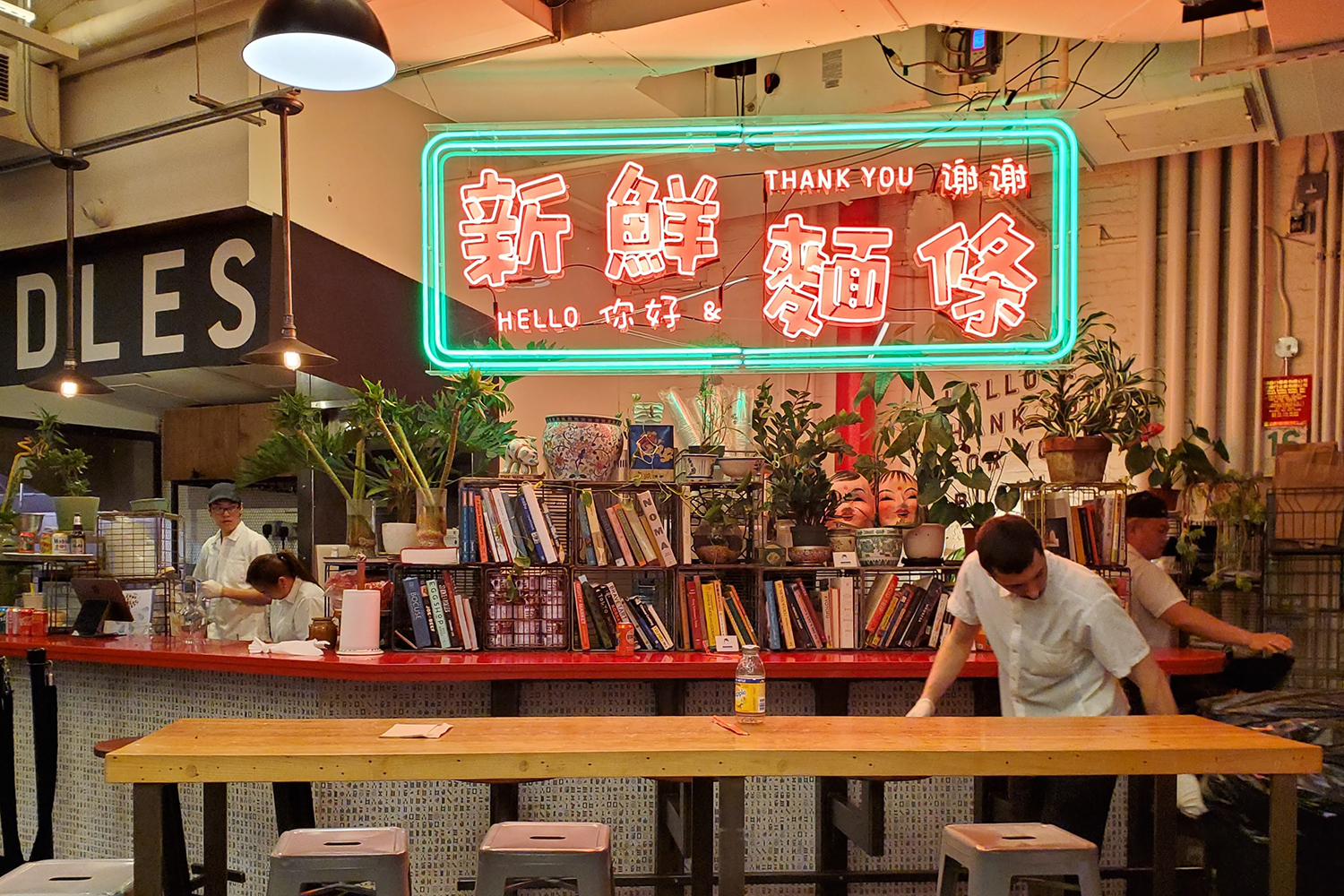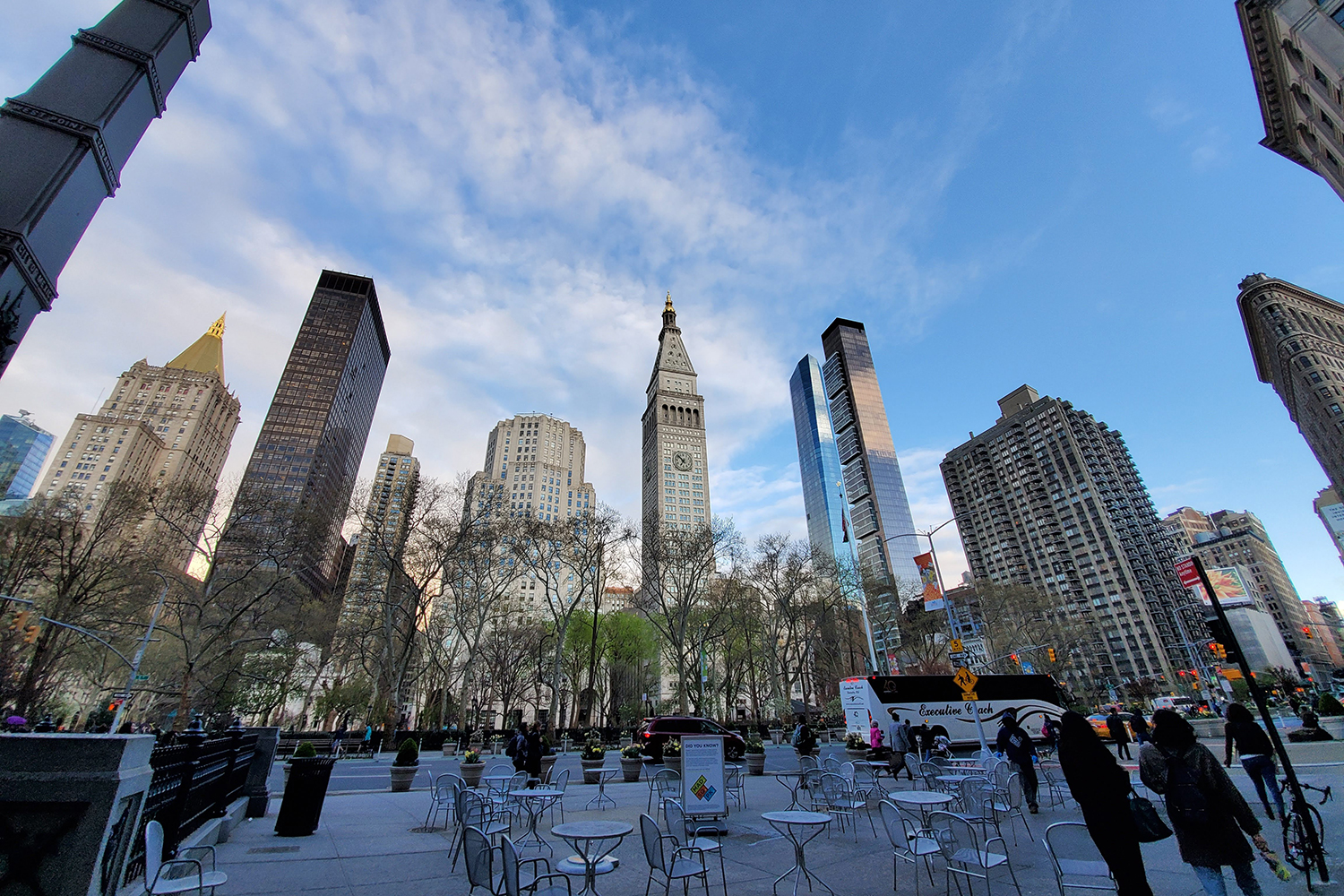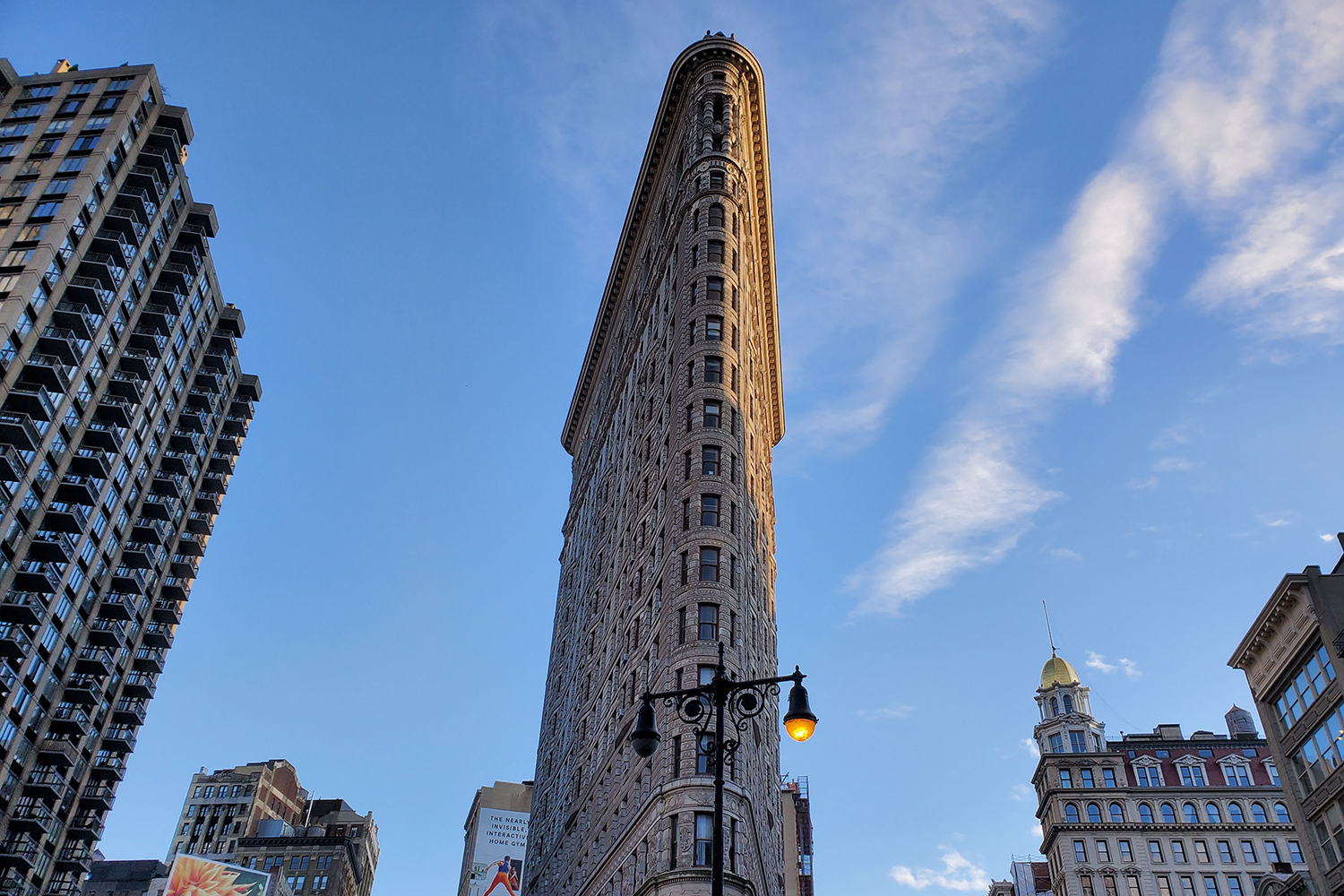“The Galaxy Fold still proves foldable phones are going to be the next big thing.”
- Speedy performance
- Solid multitasking features
- The 7.3-inch expansive screen is great for reading, watching videos
- Good battery life
- Folding it up is satisfying
- Expensive
- The front screen looks ugly and is too small
- Worries about durability haven't been assuaged
Closing the Galaxy Fold is still satisfying, even after waiting five months for Samsung to fix its first foldable phone. Opening it up is still wondrous because having a large screen that I can fold up and fit in a pocket doesn’t get old.
But the Galaxy Fold is $1,980, it doesn’t radically change my life, and there’s a decent chance it won’t survive two years of use unscathed. The phone a big step for the future of smartphones, but it’s also a prototype that’s for early adopters only.
What broke, and how Samsung fixed it
But first, what exactly happened to cause the delay? In April, ahead of the Fold’s initial launch, a handful of reviewers encountered issues with the display on their Galaxy Fold units, which forced Samsung to delay the release.
The company recalled all units, and we didn’t hear anything else about the Fold until late July, when Samsung said it had fixed the issues and that the phone would be available in September.
Here are the exact hardware changes to the Fold:
- The protective cover over the screen, which some journalists mistook for a screen protector, is now tucked under the bezel around the screen, making it tougher for people to try and remove it. Removing it damaged the screen on the earlier model.
- There are now tiny plastic end caps sealing gaps at the top and bottom of the hinge area when the Fold is opened, ensuring small particles like dust cannot get in.
- The gap between the hinge and the body on the back of the Fold is smaller, again to make sure small particles cannot enter.
- There’s metal under the polymer display as extra reinforcement.
There’s also now a Premier Service for people who buy the Fold, which provides access to Samsung technicians 24/7 for any issues.
The Galaxy Fold doesn’t feel like a fragile phone, but Samsung goes out of its way to explain that it is using new materials and that you should treat it differently than you would a normal smartphone. Already, another reviewer has a damaged screen, though this could simply have been a defective unit. I have never had any problems with my unit — the original and the new one — but the point is that this is a new type of product and there are still kinks to work out with both the hardware and software. It’s why I can’t recommend anyone shell out for this phone. Wait for the second or third generation, where, hopefully, the price will come down, and the hardware and software will be far more refined.
Open and close: The hardware
Now, onto what you want to hear about: Using the Galaxy Fold is quite unlike anything else. There are two screens; the first is what you see when you hold the phone folded up. It’s a small, 4.6-inch Super AMOLED HD screen (1,680 × 720), and it’s surrounded by thick bezels that make it look like it’s from 2008. Open the Fold up like a book, however, and you’re greeted to a sprawling 7.3-inch Dynamic AMOLED screen with a QXGA+ resolution (2,152 × 1,536).
The 7.3-inch screen steals the show. Samsung calls it an Infinity Flex display, and it’s made from bonded layers of polymer material rather than glass. It doesn’t feel as smooth as glass, nor does it look as nice, but it’s what helps make the foldable phone, well, fold. Opening it is easy once you get a good grip on the edges, but snapping it shut is so much more satisfying — like hanging up a call on a flip phone.
When folded, the Fold more or less takes up the same length as the Galaxy S10 Plus. The thickness, however, is what’s noticeable, as it’s the equivalent of two phones stacked on top of each other. I stopped thinking about thickness after my first few days of using it when I found the Fold fit in all my pants pockets without fail. This will be a problem for those with small pockets.
You’ll also notice how narrow the phone is when it’s closed. It’s easy to wrap your hand around, but this is a different story unfolded. When it’s open like a book, the Fold is lightweight enough to manage, but most interactions will require both hands. One nice change is the Android navigation buttons can be moved to stay on the left, center, or right, so it’s a good idea to choose a placement based on your dominant hand.

The right edge houses the power button and volume rocker, as well as a fingerprint scanner not unlike the one on the Galaxy S10e. The power button doubles as the Bixby button when you press and hold on it, calling up Samsung’s virtual assistant, but you can change it to pull up the power menu in Settings.
There’s no fancy in-display fingerprint sensor like on the Note 10 Plus, and I don’t miss it, but the sensor is still a bit too low for my taste. I’ve instead been using the basic face unlock using the selfie camera, but it’s not secure like Apple’s Face ID. There’s no headphone jack — just like the Galaxy Note 10 range — but you do get Samsung’s Galaxy Buds in the box, and they’re great.
The phone is not IP rated for dust- and water-resistance, making it the only flagship Samsung phone without the rating. It plays into the idea that you should treat this phone differently than your typical smartphone; after all, you are paying a fortune for it. My big concern is scratches or dents on the polymer screen, as one reviewer has already seen on his new Fold. The larger screen is more prone to damage because the material isn’t as hard. My unit doesn’t have any scratches or dents yet.
The 7.3-inch screen steals the show. It’s made from bonded layers of polymer material rather than glass.
When I first opened the Fold, both sides surrounding the hinge remained as flat as a pancake. After using it for a few days, the phone no longer sits truly flat. The edges slightly stick up, especially when held in the hand. The Fold itself doesn’t feel as stiff as it did right out of the box. I can now feel and hear sounds of the parts shifting and rubbing each other while holding the Fold unfolded. It does make me wonder how the Fold will feel after a year of use, but time will tell.
Yes, it doesn’t feel fragile and looks like a brick, but I do think a single drop or two onto asphalt could take the device out of commission. If it’s any comfort, a case is included, one that’s made up of a Kevlar-like material. It feels soft, and putting it on means you won’t have to deal with ugly fingerprints back and front, but it won’t offer much protection from a drop.
The screen and crease
The 7.3-inch screen is beautiful, colorful, and sharp. It’s bright enough to see the screen in direct sunlight, but you need to angle it a certain way because it attracts a lot of glare due to the polymer material used in the display, which looks laminated. This isn’t as much of a problem indoors, but I did find myself adjusting the way I held the Fold outside.

The 4.6-inch screen on the front looks even better, but it’s tougher to judge because it’s small. I often didn’t spend time using it because it’s so tiny. Content looks squished, and typing on it is a nightmare, so I often just opened the phone up. Samsung said the front screen is mostly for notifications, and that’s how I’ve been using it.
Can you see a crease where the phone folds? Yes, there is a crease and, yes, it’s obvious. The crease is visible when looking at the phone from the side, or when outdoors. It’s tougher to see when looking at the phone straight on — particularly in bright and colorful apps. You can also feel it as you slide your finger across the 7.3-inch screen. I got used to it, but I can’t say it’s particularly attractive. It’s also a bit distracting when watching videos.
The software experience
Samsung’s One UI software, running Android 9 Pie, packs a few surprises. As mentioned, I only used the 4.6-inch screen to clear away notifications, to check the time, or to ask Google Assistant a question. For everything else, even walking in the bustling streets of New York City, I opened up the phone to use the 7.3-inch screen. It felt akin to holding a Kindle. People with large hands (like me) won’t have much trouble, but if your hands are on the smaller side, you’ll find it unwieldy.
Speaking of Kindles, the Galaxy Fold completely replaced my e-book reader. It’s almost the same size as the Kindle, and reading with the Amazon Kindle app is phenomenal on the 7.3-inch screen. I can even close the phone like a book when I’m done. It’s hands down my favorite use for the larger screen.

Games like Pako Forever and Alto’s Odyssey look great. Movies and videos are more immersive than on traditional phones, and every app is supersized. Optimized apps like Google Maps, Gmail, and Google Calendar take it all a step further, making use of the extra space well.
Not all apps are created equal, however. Instagram looks ridiculously large, as you still only see one post at a time, and Twitter could be refined. As time passes and more foldable phones are released on the market (and prove popular), expect app developers to tinker with their apps to make better use of these larger screens.
Multitasking is great, though triggering it isn’t as fluid or seamless as multitasking on an iPad with iPadOS.
One of the best features is App Continuity, which Samsung worked on with Google. It makes any app you were using on the 4.6-inch screen automatically open on the 7.3-inch screen when it’s unfolded. It’s seamless, and the contents of the app remain unchanged. You can also (optionally) use the feature in reverse. I’ve used reverse App Continuity to move apps like Google Maps to the 4.6-inch front screen after closing the Fold so I could continue looking at directions. It’s excellent.
Multitasking is great, though triggering it isn’t as fluid or seamless as multitasking on an iPad with iPadOS. Samsung has added a floating window you can pull out from the right side of the phone. Tap on apps in this panel and they will open up in multitasking mode — you can open up to three apps for the ultimate experience, but two of the apps are perhaps a little too squished to really be utilized well. It’s much better using two apps in split-screen mode, as it feels like you’re holding two phones next to each other.

Not all apps will work in this mode, however; Facebook Messenger, for example, simply won’t open in split-screen, which is a bummer. Samsung hopes developers will add support as the foldable phone category expands.
Here’s an excellent use case for all of you wondering why you’d want such a big screen. I got an email asking to reschedule a meeting, so without closing my email app, I pulled out the multitasking tray, opened Slack to connect with a colleague attending a meeting with me, and also opened my calendar app to check my schedule. I was able to check my schedule, message my colleague, and still have the email open to reference the potential new meeting times without having to switch back and forth between apps. This is the best part of the Galaxy Fold, but I still think Samsung and Google could do a bit more work on optimizing the split-screen mechanics; they don’t feel as fun or smooth as iPadOS.
Strong performance
The Fold, like its Galaxy S10 siblings, is powered by Qualcomm’s Snapdragon 855 processor. It’s the flagship chipset of choice this year, and a handful of other Android phones use it already. It’s paired with a staggering 12GB of RAM, as well as 512GB of internal storage. There’s no MicroSD card slot so you can’t expand storage, but it’s unlikely you’ll need much more.
I’d usually say 12GB of RAM is overkill, but considering this may be one of the few smartphones you’ll be using to multitask with other apps open, it’s a little more warranted on this device than any other. I haven’t run into any issues with performance on the Galaxy Fold. Multitasking poses no problem, and games like Pako Forever, Alto’s Odyssey, and PUBG: Mobile run well on the 7.3-inch screen.
Here are a few benchmark results:
- AnTuTu 3DBench: 361,857
- Geekbench 4 CPU: 575 single-core; 2,240 multi-core
- 3DMark Sling Shot Extreme: 4858 Vulkan; 5,571 OpenGL
These scores are good, but they have been eclipsed by devices like the new iPhone 11 range, the OnePlus 7T, and the Asus ROG Phone 2. Nevertheless, the Galaxy Fold doesn’t disappoint. You’ll have no issues running the apps you want to use.
Six cameras

The camera experience on the Galaxy Fold is similar to what we’ve seen on the Galaxy S10 Plus, but with more cameras — six to be specific. There’s a 10-megapixel lens on the front, as well as a 10-megapixel lens paired with an 8-megapixel 3D depth sensor on the front when the screen is unfolded. On the rear, you’ll find a 16-megapixel ultrawide lens, a 12-megapixel standard lens (with variable aperture), and a 12-megapixel telephoto lens. It’s the extra 10-megapixel lens on the front that is the new addition, and the only difference between the Fold’s cameras and the S10 Plus’ setup.
The Fold is quick to take pictures, which are colorful and detailed in good lighting conditions, and there’s solid HDR, so images never look too underexposed or overexposed. The triple camera setup on the rear makes it a versatile system, as you can zoom in or go ultrawide for the perfect shot. These two cameras falter in low light, though, as details are often muddy. The main standard camera, which can switch to a wider aperture at night, fares better, but it’s not as strong as the nighttime shots we’ve seen come out of the iPhone 11, Huawei P30 Pro, or Google Pixel 3.
Live Focus, Samsung’s portrait mode that adds a blur effect behind a subject, works best in broad daylight. It doesn’t do the best job outlining the subject and details aren’t as strong, but when it works, the result is solid.
On top of all this, you can capture 4K HDR video, which offers a cinematic and colorful look to your videos, and there’s a Super Steady mode that sacrifices some image quality for smooth shots.
The 10-megapixel cameras — above the unfolded and folded front screens — take average selfies. Detail is often lacking when compared to selfies from the iPhone 11 or Pixel 3, and I’ve often run into overexposed backgrounds. You’ll want to use the selfie camera on the inner screen — the one with the extra depth-sensing camera — as Live Focus selfies are a little better. There’s better accuracy with the blur, and photos are generally more vibrant. These selfie cameras can capture 4K UHD video if you plan on vlogging in high quality.
It’s not the best camera system, but the six cameras on the Galaxy Fold will satisfy, and its versatility means you have more ways than one to take a photo.
Good battery life
A large 4,380mAh capacity battery sits inside the Galaxy Fold. It’s a dual-cell battery, but all you need to know is that battery life is good. On light to medium days of use, which involved using the Fold for browsing social media, messaging, and more, I frequently ended with about 50 percent battery life around 6 p.m. Relying on it more to watch videos, play games, read via the Kindle app, and stream music strained the battery more, but the Fold still managed to get through a full day, with around 30 percent left by 7 p.m. It’s not as great as the iPhone 11 Pro Max, but it does the job.
On one particular day of extensive reading, I managed to hit seven hours of screen on time, which is impressive. I average around three and a half hours of screen on time on the Google Pixel 3 XL, for example.

In our battery test, where we played a 1080p YouTube video over Wi-Fi with max brightness (on the larger screen), the Galaxy Fold lasted for 14 hours and 10 minutes. Impressive. That’s our second-best score to date, still sitting just behind the Huawei P30 Pro.
You can charge the Galaxy Fold wirelessly — unfolded or folded — or with a USB Type-C charging cable. While there’s support for fast charging, it’s only for Qualcomm’s Quick Charge 2.0 technology, which isn’t as fast as other Android phones that use Qualcomm Quick Charge 4.0 or other proprietary technology. It’s not going to charge as fast as the Note 10 Plus. Still, the phone managed to go from 5 percent to full in around two hours time.
Wireless charging support means there’s also Wireless Powershare, a feature first introduced on the Galaxy S10 series. You can turn the Fold into a Qi wireless charger and charge other devices that support the standard, like the Galaxy Buds earbuds case, or even an iPhone XS. It’s best used in dire situations, as it’s slow.
Price, availability, and warranty
The Galaxy Fold is $1,980 and comes with 512GB of storage, as well as Samsung’s Galaxy Buds, which are true wireless earbuds. You can buy it unlocked from Samsung’s website and Best Buy, but the only carrier selling it is AT&T, and if you buy this mode,l just be aware that it will be locked and filled with bloatware.
It comes in Cosmos Black and Space Silver. There were two other color options available before, but Samsung has decided to streamline the choices. A 5G version of the Fold is available in some markets outside the U.S.
Buyers will get Samsung’s Premier Service, which offers up access to Samsung technicians 24/7. You can ask them any questions you have about the Fold, and they can help show off features of the phone, and more.
You only get a standard one-year warranty, but it offers one free screen repair. After the warranty expires, you’ll get a one-time $150 screen replacement, but after that, it will cost $600. Samsung’s Premium Care extends your warranty and coverage, but it will cost you $12 a month.
Our take
The Samsung Galaxy Fold might have had a turbulent launch, but it’s a strong first step for foldable phones. The $2,000 price still puts the tech out of reach for most people.
Is there a better alternative?
There isn’t a lot of competition for the Fold if you’re looking for other foldable phones. Its biggest competitor is the Huawei Mate X, a foldable phone from the Chinese company that’s set to release this year. The Mate X is more expensive, at around $2,600, but it has a beefier battery, sleeker design, an extra screen on the back, and, more than likely, better cameras — if the Huawei P30 Pro is anything to go by. Sadly, like most Huawei phones, the Mate X won’t be sold in the U.S.
Other phones, like the Motorola Razr reboot, look promising but are still in the works. It’ll be months before we see the competition hit its stride.
If you just want a really good phone, Samsung’s Galaxy Note 10 Plus is a good place to start. You should also look at the Galaxy S10, and the iPhone 11 Pro range or iPhone 11. If you’re a shutterbug, it’s worth waiting for the Google Pixel 4. Check out our best smartphones guide for more.
How long will it last?
This is a tricky question to answer since the Fold is the first foldable phone from a major manufacturer, and it has already been delayed once due to display issues, and the new version has already been damaged (though it could have just been a defective unit). It should ideally last for three to four years, but the hinge mechanism could wear down, and the display could get damaged through everyday use, limiting its life span.
One thing I do know is Samsung is still slow at pushing out software updates. Don’t expect to get Android 10 on the Galaxy Fold until early 2020, which is disappointing.
Should you buy it?
No. The Galaxy Fold feels like the future of phones, but it’s far too expensive in the present.


